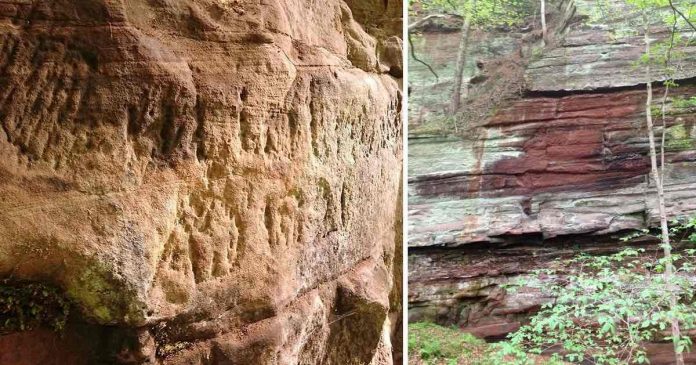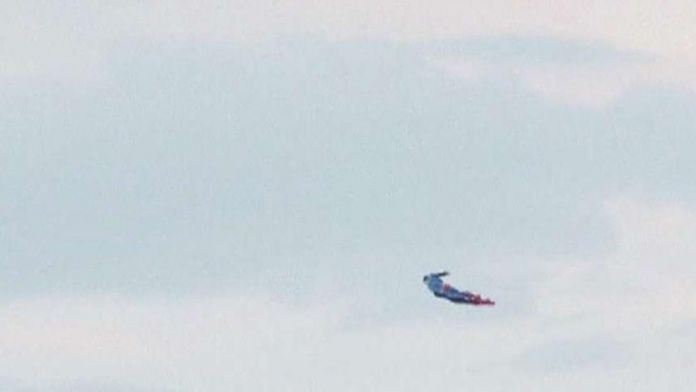The carvings, which are more than 1,800 years old, were left by soldiers quarrying stone to repair Hadrian’s Wall and include a caricature of their boss and a “good luck” penis.
The incredible etchings are being recorded before they are lost forever as a result of erosion of the soft sandstone in which they were made, at the remains of a quarry at Gelt Woods, in Cumbria.
Archaeologists from Newcastle University are descending 30ft down the quarry face to record the “written rock of Gelt”, in a project funded by Historic England.
Carvings on the rock face include a caricature of the commanding officer in charge of the quarrying and an inscription dating to 207AD, a period when Hadrian’s Wall had a major repair and renewal programme.
The markings were first discovered in the 18th century, but experts now say they have uncovered new graffiti.
The new findings include a drawing of a phallus, which, according to experts, would have been a general good luck symbol to the Romans who carved it.
One carving which refers to the consulate of Aper and Maximus can be dated to 207AD and offers proof of rebuilding and repair work to the Roman frontier in the early 3rd century.
In order to record the carvings, the archaeologists from Newcastle University are working with rock climbing specialists to gain access to the graffiti on a system of ropes and pulleys.
Mike Collins, inspector of ancient monuments for Hadrian’s Wall at Historic England, said: “These inscriptions at Gelt Forest are probably the most important on the Hadrian’s Wall frontier.
“They provide insight into the organisation of the vast construction project that Hadrian’s Wall was, as well as some very human and personal touches, such as the caricature of their commanding officer inscribed by one group of soldiers.”
Ian Haynes, professor of archaeology at Newcastle University, said: “These inscriptions are very vulnerable to further gradual decay.
“This is a great opportunity to record them as they are in 2019, using the best modern technology to safeguard the ability to study them into the future.”













